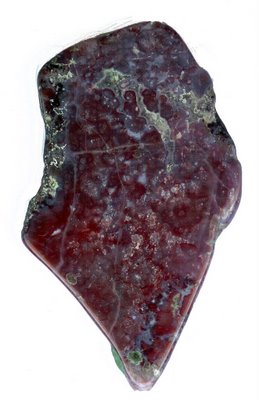Monday, July 31, 2006
Sunday, July 30, 2006
Oolitic Chert
 Aha! This is the sample Hazel found on the Aliakmon,
Aha! This is the sample Hazel found on the Aliakmon,and it's a beauty!
The matrix is Fe-rich silica, now chert.
Each of the roundish ooliths are about 0.5 cm, and
their centers consist of nuclei of various sorts.
Some are greenish and look like rock fragments, others
whitish and perhaps shells. Or even shark teeth fragments?This one needs a good
microscopic examination.
Ooliths are merely little mudballs rolled around by low,
steady waves. Most form in carbonate (coral) sands in shallow waters and then become oolitic limestone.,
But these are indeed siliceous, causing a great deal of sparking when being sliced with the rock saw. This implies a much
greater depth. I'll read up on these and get back
to you.
The width of the sample shown is about 2 cm.

More forms of Quartz
 This is part of the wall of an open geode.
This is part of the wall of an open geode.Everything you see is some sort of silica.
All the crystaline silica is good old quartz, smoky quartz, which looks white at the fim itself. Further in, is a rim of greyisn smooth
chalcedony.
The rim itself is probably a mix of chalcedony
with microcrystalline quartz, and a tad of
opal mixed in for good measure. Love the
way it grew in cloudlike form as it filled in
the vug in the lava.





